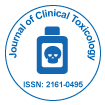
Journal of Clinical Toxicology
Open Access
ISSN: 2161-0495
+44 1478 350008

ISSN: 2161-0495
+44 1478 350008
Lankin V and Tikhaze A
Russian Cardiology Research Complex, Russia
Posters & Accepted Abstracts: J Clin Toxicol
Low density lipoproteins (LDL) of blood plasma are natural lipid-transporting nanoparticles. LDL peroxidation leads to the accumulation of primary (hydroperoxides) and secondary (dicarbonyls) products. This is accompanied by a modification of the LDL particles structure, as a result of which they acquire the ability to be captured by scavenger receptors of cells and induce of atherogenic damage in vessel wall during cardiovascular diseases and in diabetes. It has been shown that the co-oxidation of LDL lipids and glucose causes intensification of free radical processes and the glucose oxidation productmethylglyoxal produces a superoxide radical anion in the process of interaction with amine compounds. It was established that in patients with diabetes mellitus, the oxidation of LDL is significantly higher than in patients with atherosclerosis. Nevertheless, the particle of high atherogenic lipoproteins subject to free radical oxidation to a much lesser degree than LDL particles but becomes susceptible to oxidation after modification with low molecular weight dicarbonyls. LDL modified with glyoxal and methylglyoxal are quite slowly eliminated from the blood flow of primates (rhesus monkey), whereas malonyldialdehydemodified LDL disappears from the bloodstream very quickly.
Email: lankin941@mail.ru